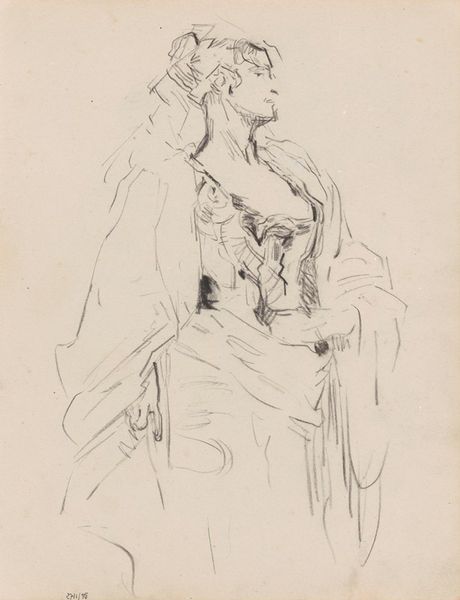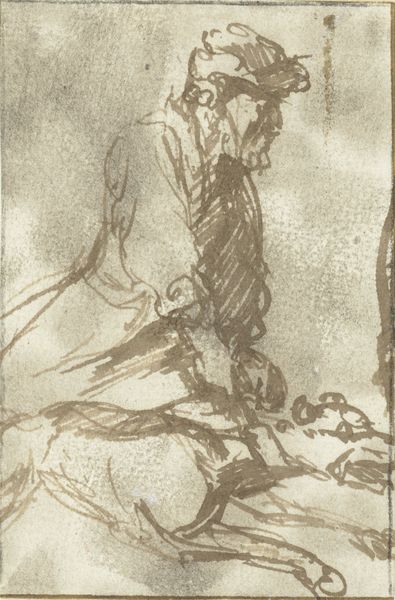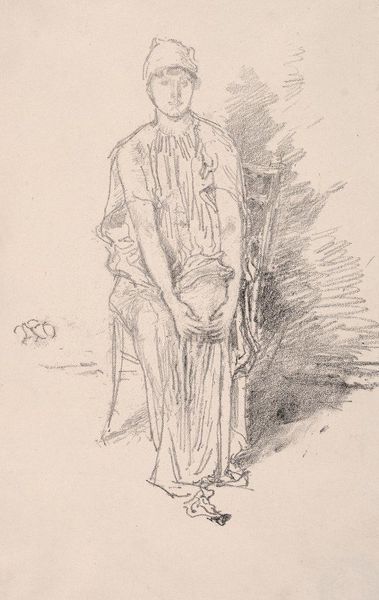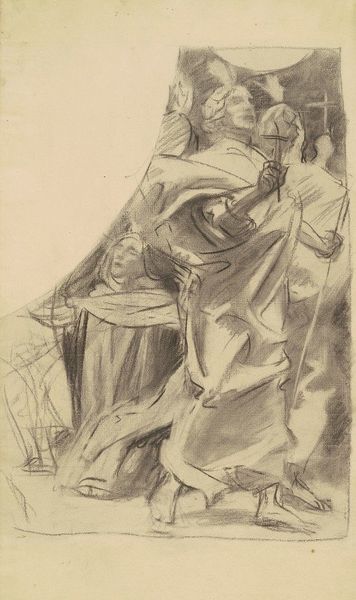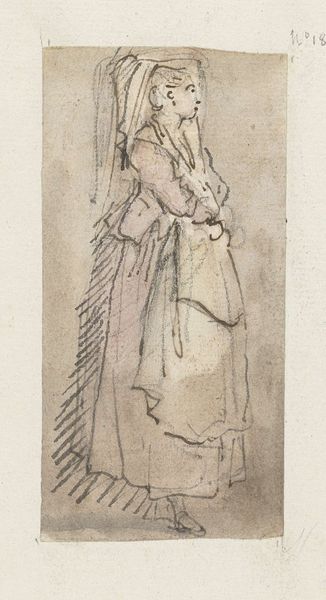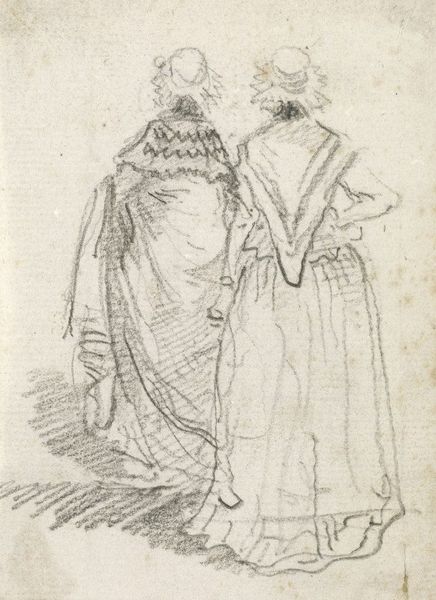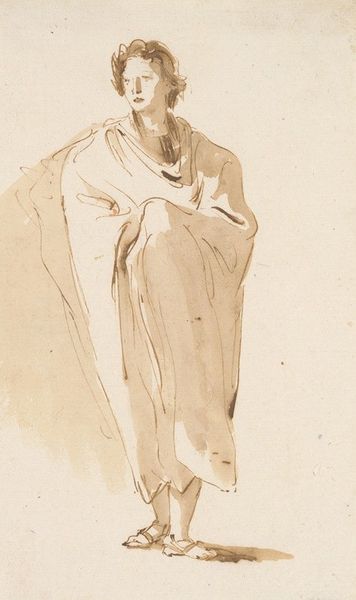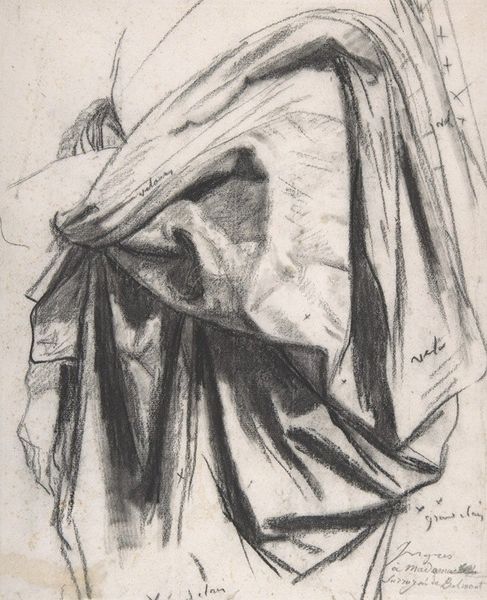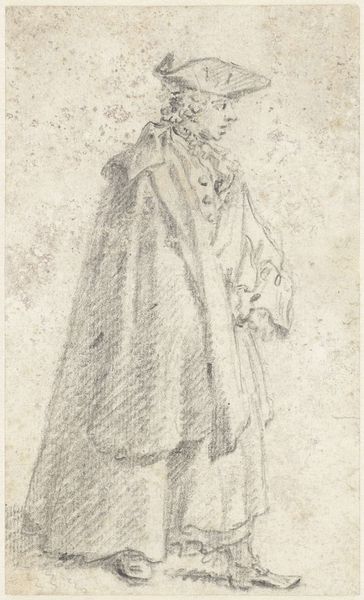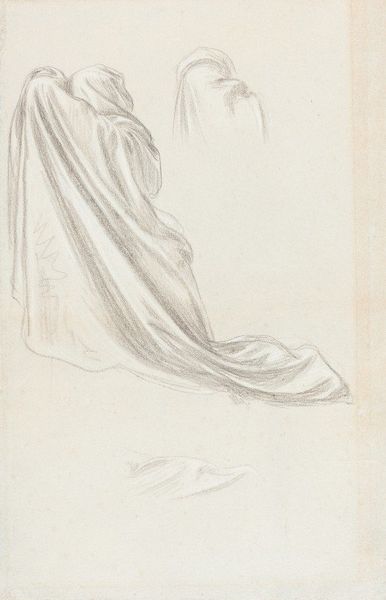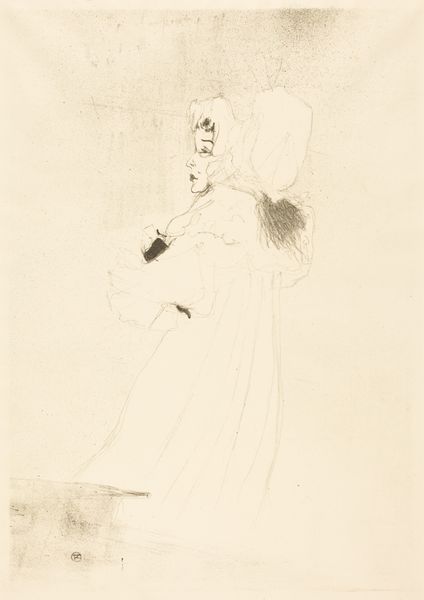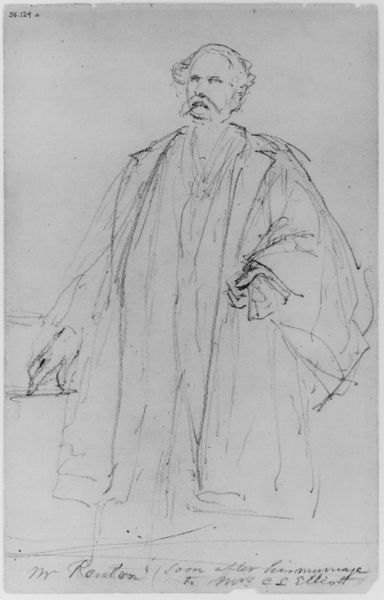
drawing, paper, ink
#
portrait
#
drawing
#
baroque
#
pencil sketch
#
charcoal drawing
#
figuration
#
paper
#
ink
#
pencil drawing
#
underpainting
Dimensions: 24 x 19 cm
Copyright: Public domain
Editor: So here we have "A Study for The Great Jewish Bride," a drawing in ink, charcoal, and pencil by Rembrandt van Rijn from 1635. The mood strikes me as contemplative. It’s a portrait, but not posed in a formal way; what do you make of it? Curator: Well, firstly, “not posed” is deceptive, isn’t it? Like someone snapped a photo of you first thing in the morning, “naturally.” Even casual portraits involve careful choices! But it whispers, doesn't it? More than it shouts. You almost feel like you're glimpsing something secret. It's raw. Look at the energy in the lines. See how Rembrandt uses the varying pressure to build depth? Like the shadow just pooling there. I almost feel like I can feel the gears turning in his mind as he tries to breathe life into this future painting! What about you, any hidden secrets leap out? Editor: It definitely has the air of something unfolding; not quite finished. How does it connect with his more ‘finished’ works, the final painting itself? Curator: The final painting has a romantic richness. More color, obviously, more deliberate composition, a full narrative. But this sketch has the emotional heart. I suspect Rembrandt sought that raw feeling that is evident in the sketch and wanted to harness the initial magic. It’s almost more vulnerable because it's unfinished, it feels as though it comes from the depths of his mind, and in turn he puts us in contact with something similar within ourselves. Editor: It’s fascinating to see that vulnerability and that process. I think I prefer this unfinished work! Curator: Perhaps that’s where the true beauty lives, in that little imperfection of a glimpse that can speak directly to another soul. It's interesting to consider that even studies, can stand strong as works of art in themselves.
Comments
No comments
Be the first to comment and join the conversation on the ultimate creative platform.
